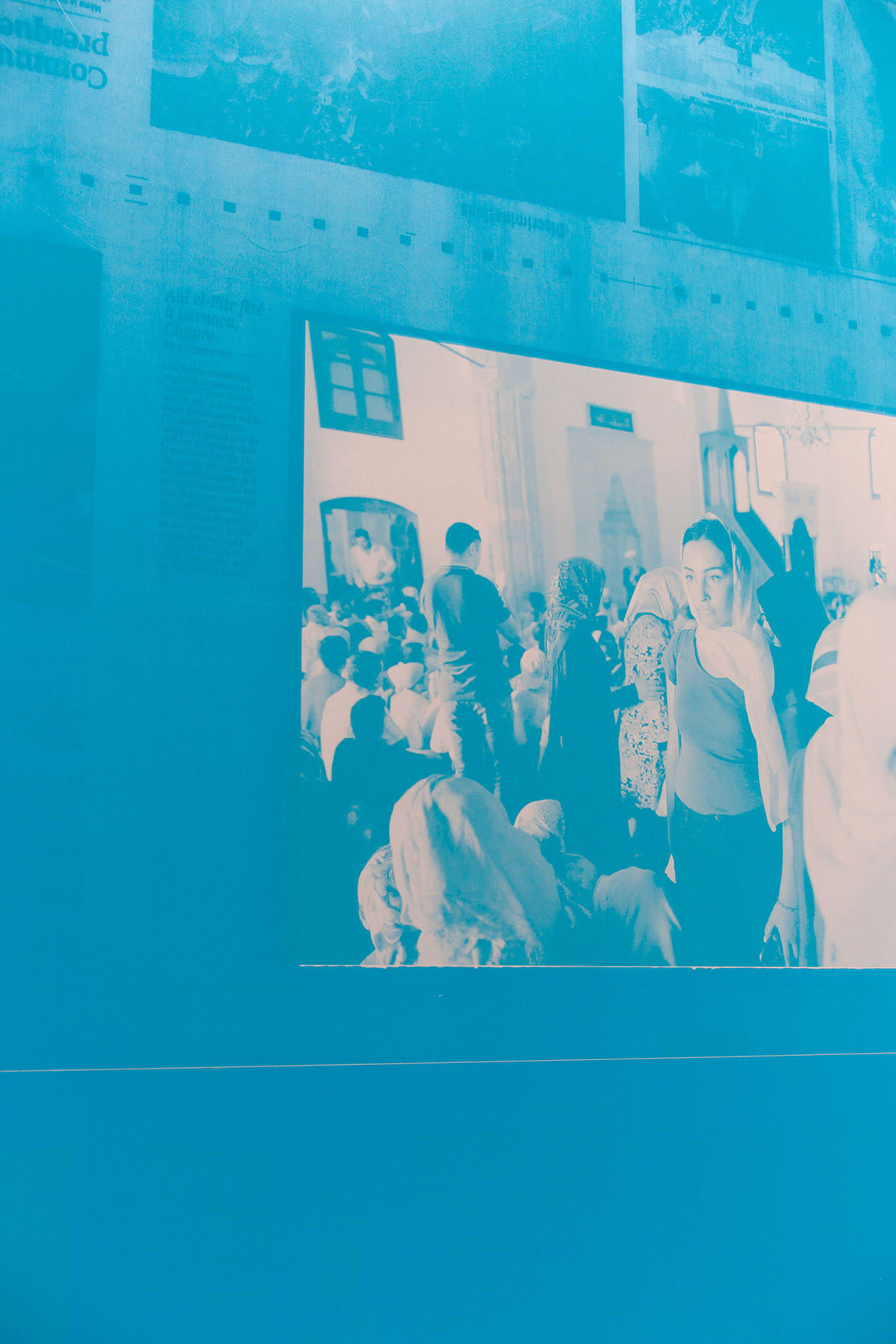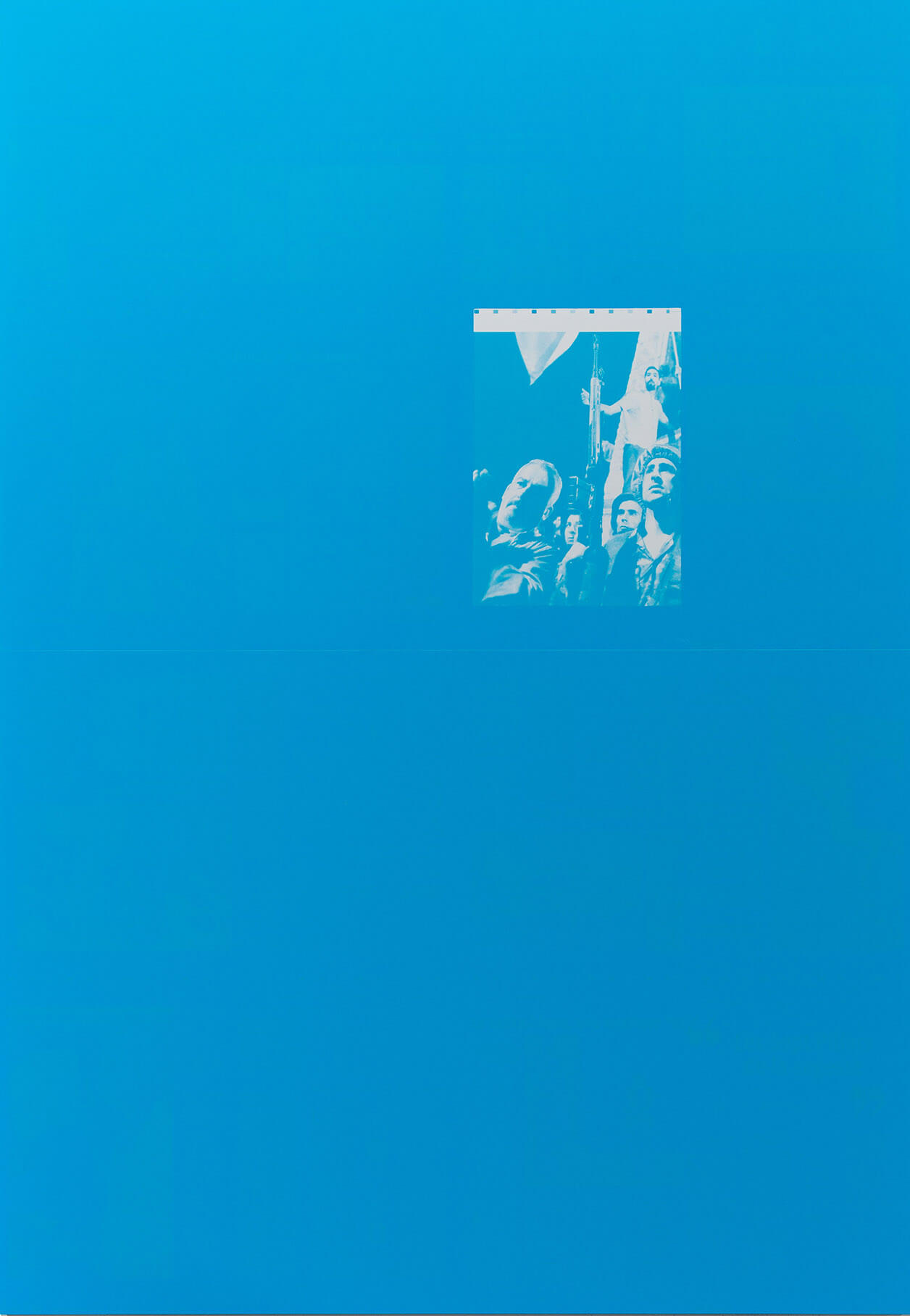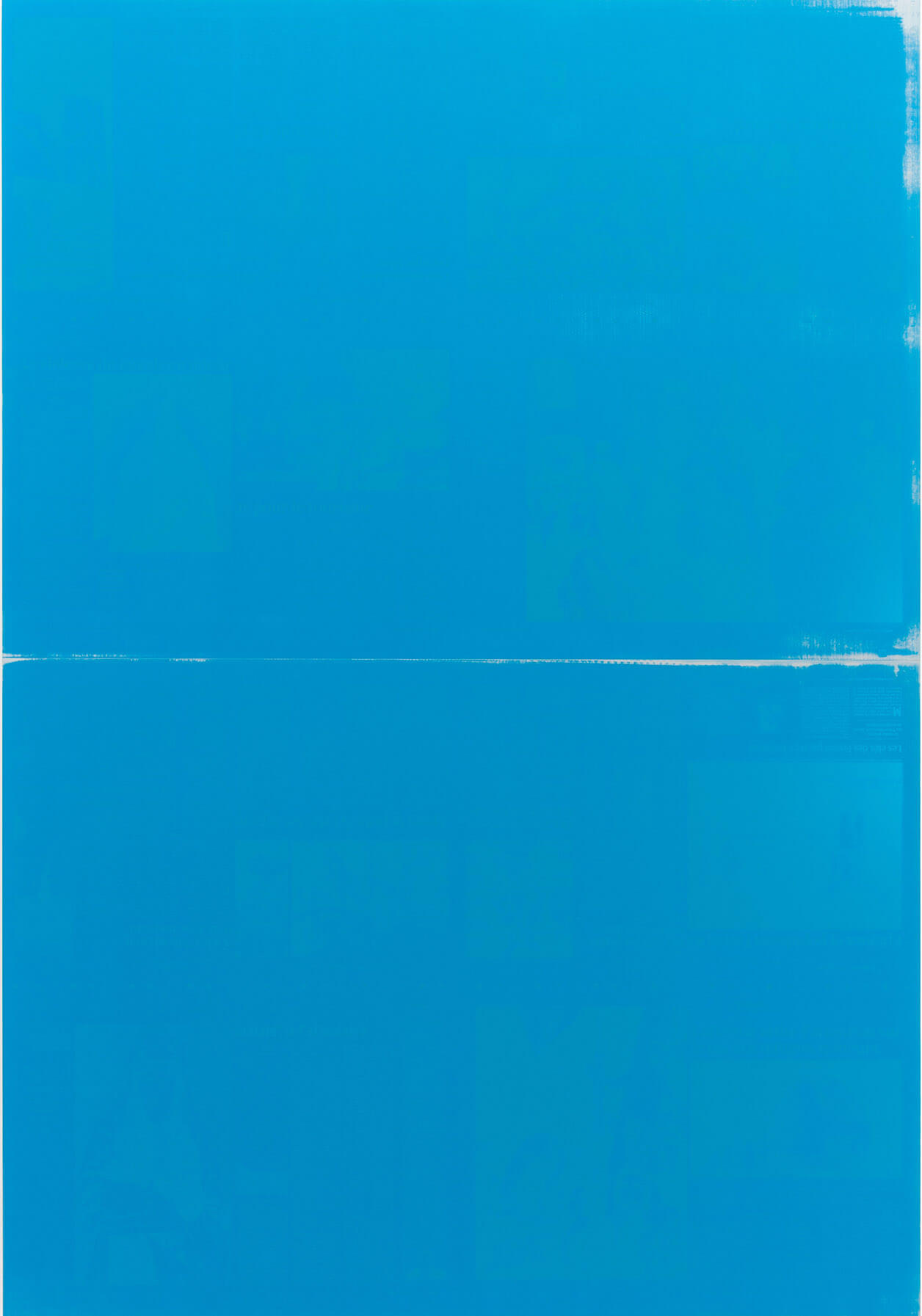Performative Violence and Its Image
Justine Ludwig
October 9, 2017

On October 1, 2017, the deadliest shooting in American history (for now) took place in Las Vegas. At least 58 were killed and almost 500 injured—all of them concert goers, gathered in attendance of the Route 91 Harvest Festival. The crackle of full-auto fire can be heard over country star Jason Aldean’s performance as the shaky frames of handheld cameras in flight capture the chaos. The perspective of the immediate witnesses is broadcast for mass consumption. It all feels particularly “real,” and it is not without precedent.
On December 19, 2016, the Russian ambassador to Turkey, Andrey G. Karlov, was assassinated at an art gallery opening in the Turkish capital of Ankara. In front of professional photographers and a videographer, a 22-year-old off-duty police officer shot and killed the ambassador and wounded others. The photographs taken were shockingly pristine, basked in the even white light of the gallery. The high-resolution video of the assassination was widely circulated in the media—joining the ranks of the news-sanctioned snuff film.
What is distinctive in the case of Karlov’s assassination is that the photo-documentation of the event lacks the chaos we traditionally associate with terrorism. These images look like clips from a television show or movie and as such, staged. Their steady and slick nature lacks the markers of veracity that we have come accustomed to such as shaky movement and haphazard framing.
This marks a new variation of performative violence: an emergent form of terrorism that capitalizes on technological advancement; pre-publicized happenings such as concerts, markets, or festivals; and visually iconic locales effectively ensuring maximum media coverage. The result of which is viral imagery that gains both a wider audience and greater distribution than traditional news coverage. This is violence tailored for the camera, or the camera phone. Through the distribution of these images the violence is taken on as collective trauma, while simultaneously diminishing visual impact through oversaturation.
In Simulacra and Simulation, Jean Baudrillard addresses the concept of hyperreality: that which is more real than real, especially as manifest in cinema. He also designates that; “terrorism is always that of the real.”1 As technology and terror together allow for manifestations of violence bordering on the cinematic, terror itself enters the realm of the hyperreal.
Bastille Day 2016. Following a fireworks display, a large unmarked white truck hops a curb in Nice and drives for over a mile through a large crowd. The attack kills 85 and injures over 300. Five months later in Berlin, a delivery truck is hijacked and driven into a popular Christmas Market. On June 3, 2017, a van strikes pedestrians walking across London Bridge. Two months later in Barcelona, a van plows through Las Ramblas.
The recent escalation in vehicular attacks in Europe has had a profound effect of the way that terrorist action is seen and understood. These attacks have taken place in either celebratory contexts, or at popular tourist destinations: moments and sites selected not only because they promise mass casualties, but also documentation. The resulting records are primarily first person—capturing the chaos as people flee in confusion. Unsteady, vertically held mobile phones provide a limited frame of vision and understanding. They lack the editor’s touch, as there is no cropping or considered final image selection; what we see is raw. We have a glimpse into the physical experience—initiating personal investment and the opportunity to transport oneself inside the event.
The 2017 bombing at an Ariana Grande concert in Manchester saw quickly proliferating imagery because of its inherently selfie-ready context. Grande’s tech-savvy fan base uploaded their personal videos on to YouTube, which gave rise to many compilation and memorial videos. These feeds offer insight into the fear and confusion of those in the aftermath, playing almost seamlessly after jubilant concert footage on a platform tailored for entertainment.
Similarly, the April 2013 bombing of the Boston Marathon received so much unique documentation due to the bomb’s placement at the finish line. Professional photographers were trained on the finish line, capturing runners as they completed the race, while individuals documented for friends and family.
During the August 2017 Unite the Right rally in Charlottesville, a car slammed into a crowd of counter-protestors, killing one and injuring nineteen. With multiple news outlets on hand, not to mention countless smartphones, this terrorist act was captured from multiple perspectives in great detail, and real time. Drone footage, originally intended to capture the scale of the protest, provided an atypical bird’s eye view of the scene as it unfolded. This documentation, pristine and ripe for replay and dissection, creates dual points of reference as it bares similarity to the visual language of both Hollywood blockbuster and military operations.
Professional or amateur, moving or still, grainy and shaky, or high-res and aerial—images have come to define terrorist acts.
We have come to see more and more personal documentation in contrast to the once dominant image of mourning individuals captured post-event by photojournalists. This changes the viewer’s relationship with the event. What is now being shared is the trauma of the terrorist act as it is experienced firsthand—a message in contrast to traditional aftermath images of life continuing and communities finding the strength to move on. It is a magnification shock that furthers the desired impact of terror.
Documentation of this violence, when presented on the news, is sourced often via social media platforms—listing Twitter and Instagram handles as originators. In the case of an attack in Cambrils, shortly following the events in Barcelona, an amateur camera captures the exact moment of the Spanish police killing a terror suspect in Las Ramblas. The video was credited to a Twitter handle. Equipped with mobile technology, eyewitnesses are empowered as documenters—tasked with the responsibility of sharing their firsthand trauma.
And now Las Vegas.

The Poor Image of Terrorism
September 11, 2001, amongst its many distinctions, was the most photographed and videotaped day in history.2 The way we watched 9/11 presented performative violence on a massive communal scale. The events were pre-Facebook, pre-Twitter, pre-camera phone. At the time, the United States had only 110,000 cell phone subscribers, none of which had photographic capability.3 Because of this, we were not bombarded with real-time images taken from within the towers during the attack. The images came after, taken by those who flocked to the site of the smoldering World Trade Center as the events of the day unfolded.
The event’s circulation was driven by the predominance of its location. Also, the double act structure of the attack allowed for more eyes and cameras trained on the second tower as the second plane hit. This choreography ensured the existence of high-quality images and live feeds of the second collision. Despite the existence of clear documentation, much of it was filmed from a distance, prior to proliferation of HD video, rendering zoomed-in photography ambiguous and grainy. The prevailing aura of these images is one of fear, discord and confusion. Unfocused, atmospheric, and prevailingly low resolution, the documentation of the day retains a very specific feel that separates it from contemporary filmic reenactment, while still appearing on a cinematic scale.
A few years later, in 2005, depictions of the London subway bombing that would come to be known as 7/7 were affected by the emergence of mobile technology. By then, cell phones had become common and already, some were equipped with cameras. The ability to take low-grade video had begun to appear. Resultantly, witnesses became citizen journalists. Within the first hour of the bombings, 50 first-hand photographs had been sent to the BBC.4 Images and videos taken on the London Underground, in the midst of the terrorist attacks, made international news. Most of the images are difficult to decipher, lit merely by emergency lighting within debris-filled tunnels. Typical of the 2-megapixel capabilities of the day, upon enlargement, these images become increasingly distorted—reading as mosaics rather than photographs.
What defined the images of 7/7 was their haphazard composition and low resolution. They were raw and chaotic. Captured with emotion, their offhand focus prioritized impetus over consideration. They are what filmmaker and writer Hito Steyerl coined the poor image. “The poor image is a copy in motion. Its quality is bad, its resolution substandard. As it accelerates it deteriorates. It is a ghost of an image, a preview, a thumbnail, an errant idea, an itinerant image distributed for free, squeezed through slow digital connections, compressed, reproduced, ripped, remixed, as well as copied and pasted into other channels of distribution.”5 These are populist images. Granting space to the imagination, an audience cannot only place themselves within scenes depicted, but behind the camera as well.

Broadcasting Terror
A crucial aspect of Steyerl’s essay is not the quality of the images themselves, but the conditions of their circulation. As social media websites such as Facebook, Twitter, and Instagram now allow for instantaneous uploads that paint a personal account of events as they happen, the representation of terrorist events has changed. These images are shared through peer-to-peer networks, often circulating amongst likeminded communities. Their message and impact is subsequently sensationalized, and used to immediately proliferate a wide range of sociopolitical agendas. This phenomenon changes our dialogue with real-time events. For instance, in 2014, Facebook became, just ten years after its inception, the largest photo library in the world, holding a 10,000x larger cache of photographs than the Library of Congress.6
These firsthand amateur images have become particularly valuable to the news outlets that solicit them. They are seen as images of truth, immediate and unbiased. They possess the emotion of the events in all their anguish and confusion. Ironically, this is in opposition to what journalistic photography strives for: objectivity. It is meant to chronicle events, to document history.7
In his essay “The Intolerable Image,” philosopher Jacques Rancière discusses the photographic documentation of atrocities. He states that what causes an image to be intolerable is that the photographer chooses to observe a devastating event he did not have to. Rancière writes, “this is precisely why the philosopher criticizes the photographer: for having wanted to witness. The true witness is one who does not want to witness.”8 The citizen photographer is one who happened to be at the wrong place at the wrong time. Not an individual who has chosen to act as witness, but rather one who has been subjected to events without consent.
Images implying chaos and confusion demonstrate the desired outcome of terrorism.9 These images are miss-attributed, re-contextualized, and altered. Ownership, message, and source are obscured. This is Steyerl’s poor image in action—taken on cell phones, edited, re-appropriated, and printed in their inherent low resolution. They contrast, and thus lend credence to, the aesthetic of news graphics that bear the clear mark of having been heavily designed and considered. The poor image is a fast image. There is something human and personal about this heat-of-the-moment display. It implies and demands intimacy, creating a moment where spectators can transpose themselves into the position of image-taker. These are not glossy high production-value images implying fabrication and escapism. They are real.
This is what is so strange about the assassination images of the Russian ambassador to Turkey. They are journalistic photographs, taken with the same detachment and framing that permeates the other images from the gallery opening. They lack the madness we come to expect from images of unthinkable violence. The human toll is low compared to other acts of performative violence, but it has high visual impact. Similarly, the drone footage from Charlottesville amplifies the violence of the event by creating communal visual trauma. This documentation paired with personal imagery taken from the protesters establishes a hybrid aesthetic—establishing a high-impact, multifaceted visual presence.
The visual language of the poor image is clearly removed from that of the aesthetic of television and film violence. The stylized and crisp images of entertainment allow for easy reading. Increasingly, movie-goers are fed images of utter brutality in the form of blockbuster films. We eagerly consume and understand these images. Prior to the events of 9/11, individuals globally were already familiar with scenes of the destruction of New York City. Independence Day, Armageddon, and Deep Impact, to name only a few films, each feature scenes that appear almost as premonitions. Now we are regularly confronted with mass destruction in superhero films and suspense serials. The glut of terror documentation, both from the news media and amateurs allows for a conflation with images of entertainment. This misappropriation is only furthered as the news media inches closer and closer to entertainment through sensationalist presentation complete with slick graphics and auditory cues.
In Baudrillard’s text The Spirit of Terrorism the theorist states, “It is the tactic of the terrorist model to bring about excess of reality, and have the system collapse beneath that excess of reality.”10 As a public we freely disseminate and heighten trauma via documentation of performative violence—aiding in bring about Baudrillard’s excess of reality. The pairing of professionally captured images and personally documented experience paints a cinematic reality that borders on entertainment. As these images are spread, so does the horror of the event that caused them. In effect, the image has become one of terror’s greatest weapons.
Accompanying this essay are documentary photographs of the work of artist Emmanuel Van der Auwera (b. 1982, Brussels). Throughout his practice Van der Auwera addresses the way that we look at images associated with violence. In his Memento series the artist presents offset newspaper panels mounted on aluminum upon which he intervenes by removing text and leaving only image. Taken from reportage of mass tragedy, we are confronted with photographs of masses in mourning. In "Video Sculpture XII," Van de Auwera uses found drone footage as material. In this installation the video only reveals itself through dispersed pains of glass on tripods, which become stand-ins for viewfinders—implicating the viewer through proximity and perspective. Missing Eyes presents the focal points of individuals as they view an ISIS recruitment film. This body of work addresses how visual information is read and subsequently transmitted.
- Jean Baudrillard, Simulacra and Simulation (Ann Arbor: The University of Michigan, 1994), 47.
- Frank Rich, “What Happened to the America of 9/12,” New York Times, September 6, 2006, http://www.nytimes.com/2006/09/10/opinion/10rich.html?mcubz=0.
- Christopher Zara, “Boston Marathon Bombings, 9/11 and the Media: Two Domestic Terrorist Attacks, Two Very Different Models,” International Business Times, April 19, 2013, http://www.ibtimes.com/boston-marathon-bombings-911-media-two-domestic-terrorist-attacks-two-very-different-models-1205387.
- Torin Douglas, “How 7/7 ‘democratised’ the media,” BCC News, July 4, 2006, http://news.bbc.co.uk/2/hi/uk_news/5142702.stm.
- Hito Steyerl, The Wretched of the Screen (Berlin: Sternberg Press, 2013), 32.
- Hrag Vartanian, “How Many Photos Do Americans Take a Year?” Hyperallergic, March 21, 2012, http://hyperallergic.com/48765/how-many-photos-do-americans-take-a-year/
- Tom Junod, “The Falling Man: An unforgettable story,” September 9, 2016, http://www.esquire.com/features/ESQ0903-SEP_FALLINGMAN.
- Jacques Rancière, The Emancipated Spectator (London: Verso, 2011), 91.
- This is in sharp contrast to ISIS recruitment and propaganda materials that favor slick, high production value aesthetics that are easily read and understood.
- Jean Baudrillard, The Spirit of Terrorism (London: Verso, 2013), 18.